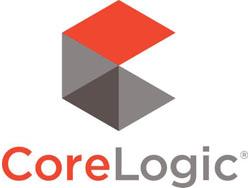Home Prices Rose 7% YOY in October, Says CoreLogic
Irvine, CA, December 5, 2017- Home prices nationally increased year over year by 7% from October 2016 to October 2017, and on a month-over-month basis home prices increased by 0.9% in October 2017 compared with September 2017, according to the CoreLogic Home Price Index (HPI).
Looking ahead, the CoreLogic HPI Forecast indicates that home prices will increase by 4.2% on a year-over-year basis from October 2017 to October 2018, and on a month-over-month basis home prices are expected to decrease by 0.2% from October 2017 to November 2017.
“Single-family residential sales and prices continued to heat up in October,” said Dr. Frank Nothaft, chief economist for CoreLogic. “On a year-over-year basis, home prices grew in excess of 6 percent for four consecutive months ending in October, the longest such streak since June 2014. This escalation in home prices reflects both the acute lack of supply and the strengthening economy.”
According to CoreLogic Market Condition Indicators (MCI) data, an analysis of housing values in the country’s 100 largest metropolitan areas based on housing stock, 37% of metropolitan areas have an overvalued housing stock as of October 2017. The MCI analysis categorizes home prices in individual markets as undervalued, at value or overvalued by comparing home prices to their long-run, sustainable levels, which are supported by local market fundamentals such as disposable income. Also, as of October, 26% of the top 100 metropolitan areas were undervalued and 37% were at value. When looking at only the top 50 markets based on housing stock, 50% were overvalued, 14% were undervalued and 36% were at value. The MCI analysis defines an overvalued housing market as one in which home prices are at least 10% higher than the long-term, sustainable level, while an undervalued housing market is one in which home prices are at least 10% below the sustainable level.
“The acceleration in home prices is good news for both homeowners and the economy because it leads to higher home equity balances that support consumer spending and is a cushion against mortgage risk,” said Frank Martell, president and CEO of CoreLogic. “However, for entry-level renters and first-time homebuyers, it leads to tougher affordability challenges. According to the CoreLogic Single-Family Rent Index, rents paid by entry-level renters for single-family homes rose by 4.2% from October 2016 to October 2017 compared with overall single-family rent growth of 2.7% over the same time.”
